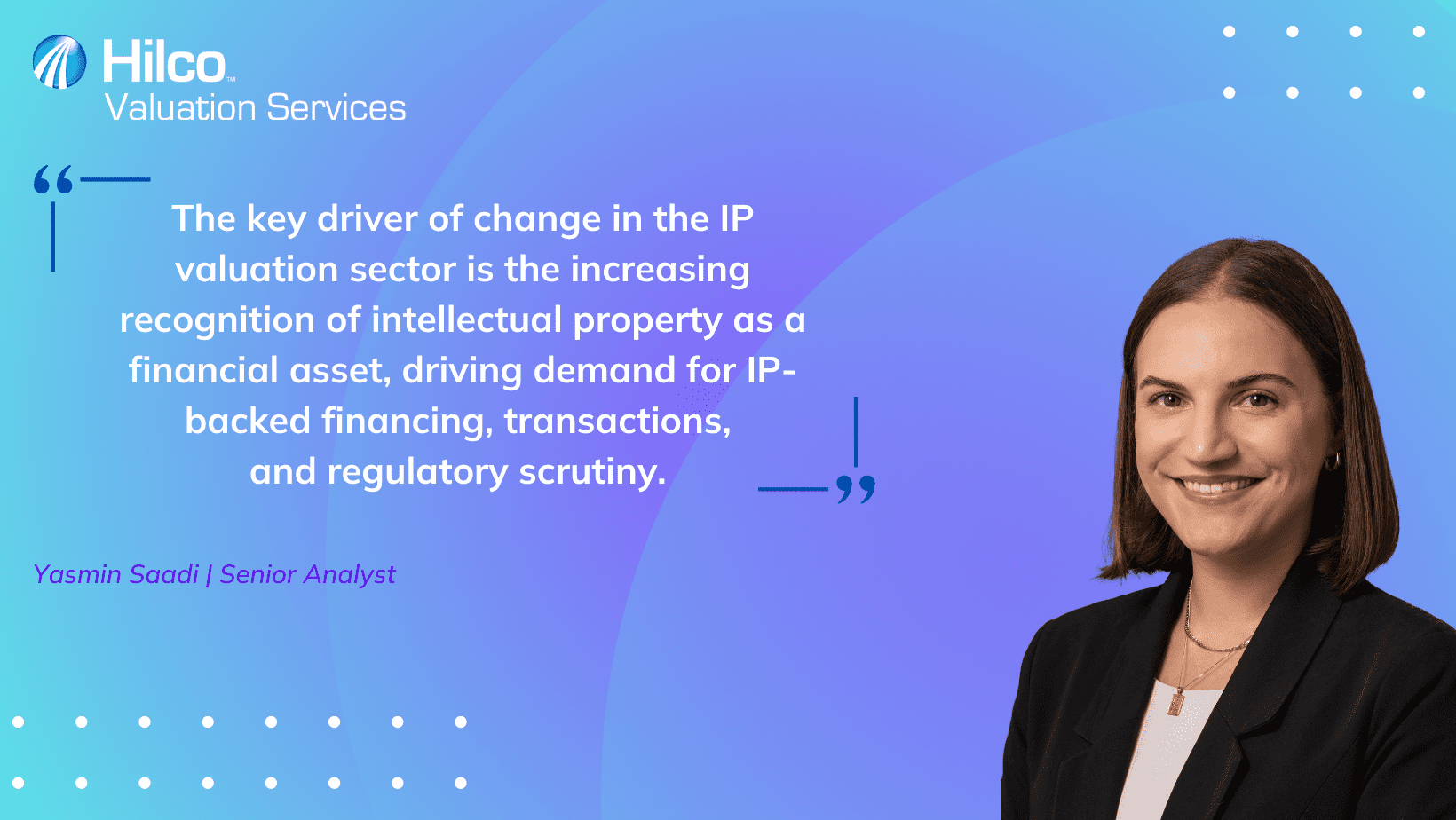Yasmin Saadi joined Hilco as a Senior Analyst (IP) last year, bringing fresh perspectives to our Intellectual Property team. With a keen analytical approach, she has provided insightful responses on industry trends, challenges, and influences in IP valuation.
Moving from audit to intellectual property has been an exciting transition. While audit focuses on compliance and risk management, IP is much more strategic, and innovation driven. Both require strong analytical skills, but IP valuation takes a forward-looking approach, assessing how intangible assets contribute to business value beyond the balance sheet. It’s been fascinating to explore, and I’ve really enjoyed the shift.
What has surprised me the most is that, unlike traditional assets, IP valuation isn’t just about numbers, it’s about competitive advantage, market potential, and legal strength. It’s not just about what an asset is worth today but how it can drive future growth. Another eye-opening aspect has been how industries view IP differently, some treat it as a core revenue driver, while others see it more as a defensive asset.
The key driver of change in the IP valuation sector is the increasing recognition of intellectual property as a financial asset, driving demand for IP-backed financing, transactions, and regulatory scrutiny. As businesses shift toward intangible asset-heavy models – particularly in AI, software, and data-driven innovation the need for standardised, transparent, and defensible IP valuations has never been greater. The rise of AI-powered IP analytics, evolving legal frameworks, and a surge in IP litigation are further shaping the landscape, compelling companies to reassess how they protect, monetise, and leverage their intangible assets for competitive advantage and financial growth.
One of the biggest challenges in valuing IP is that the value can be highly subjective, it really is ‘in the eye of the beholder’. What one company or investor may see as valuable, another might overlook. This can make IP valuations tricky, as there is often no clear-cut answer. However, as more IP assets come to market and more valuations are completed across similar industries, the process will become more refined. To address this, it is important to use a combination of approaches, like market-based, income-based, and cost-based methods, while also factoring in both the legal and business aspects of IP. Having said this, the more data we have available and the more examples of successful IP transactions we see, the better we can fine-tune our approaches.
IP valuation can differ quite a bit across industries because the way intellectual property is used varies. For example, in sectors like tech and pharmaceuticals, patents and proprietary technologies/software’s are often at the core of the business, so the focus tends to be on market potential and legal protections. In industries like entertainment or fashion, trademarks and branding might be more important, with value placed on consumer recognition and loyalty. Essentially, the type of IP and how it fits into the business strategy determines how it’s valued, whether that’s through income, market, or cost-based methods. Seeing the diversity in how industries value and leverage IP has given me a much deeper appreciation for IPs role in shaping business strategy.
When it comes to valuing a business today, there are a few key factors that come into play. Of course, financial performance is still crucial – things like revenue, profit margin and cash flow are always key. But in today’s market, brand value and strong customer relationships are becoming major contributors to a company’s worth. Outside of these factors, overall market conditions including industry trends and economic factors can influence value.


Senior Analyst
Intellectual Property
London Office

Download PDF Domitila Mwikali’s role as Hilco’s Auction Coordinator means she plays a key part in managing the logistics of…
Learn More
Download PDF Phoebe Whittaker works as a Finance Assistant, within our Finance and Operations department. Her primary responsibilities include raising…
Learn More
Download PDF The Function of a Field Exam Accounts receivable and inventory field exams help lenders assess the quality, accuracy,…
Learn More